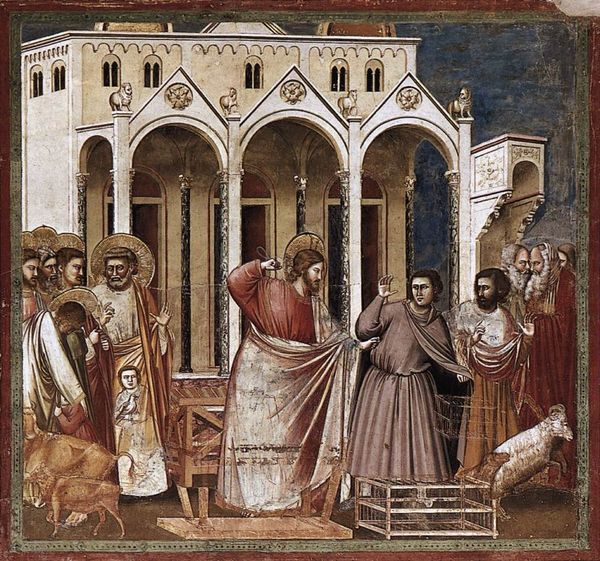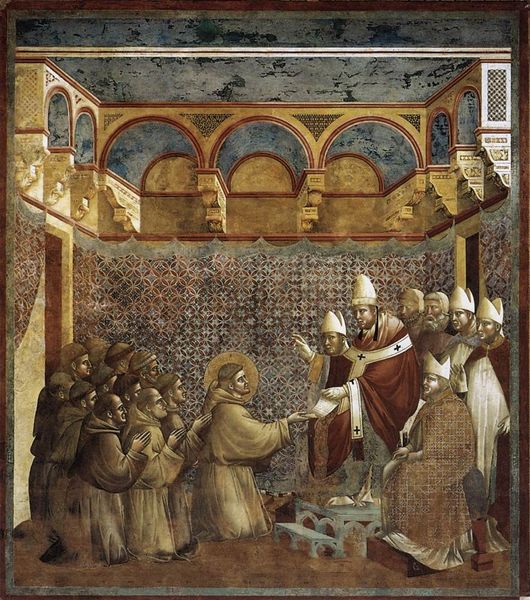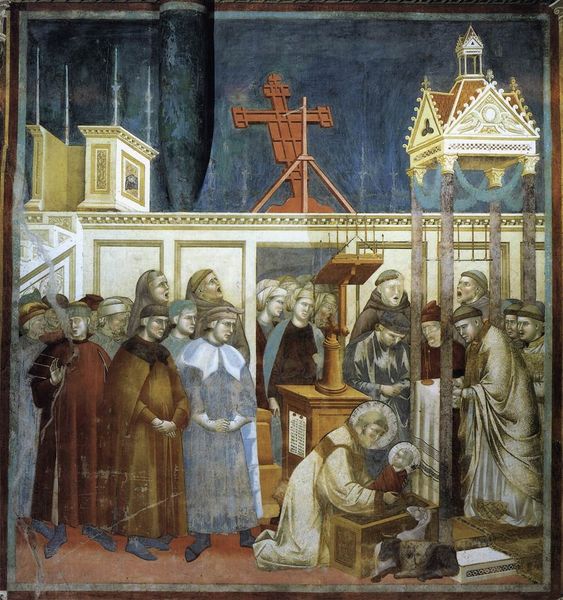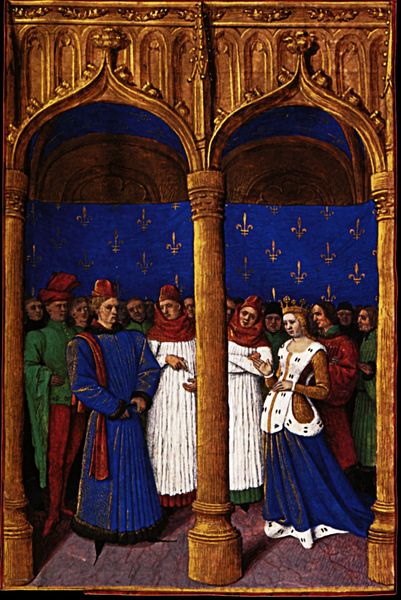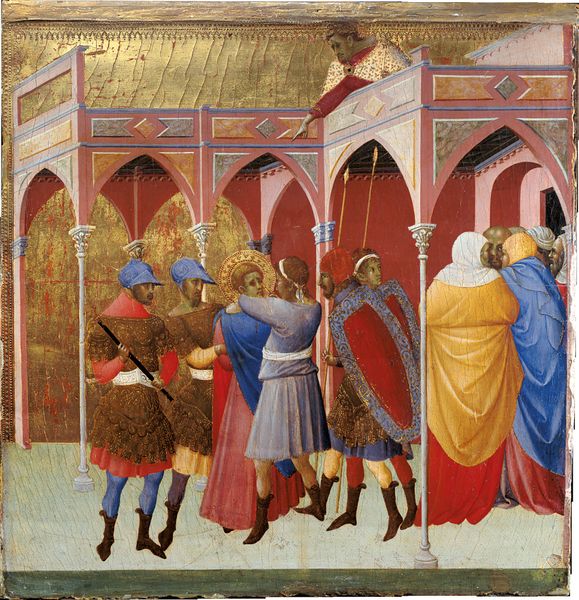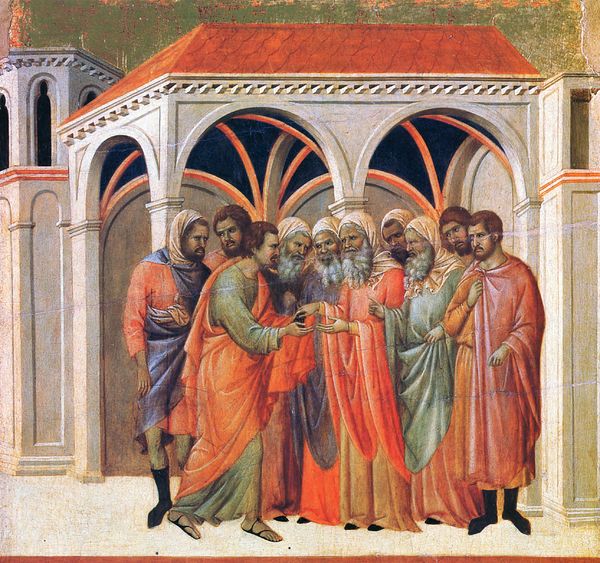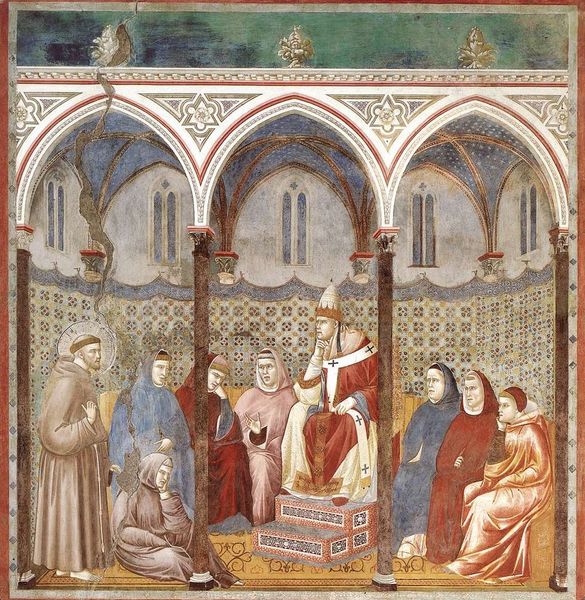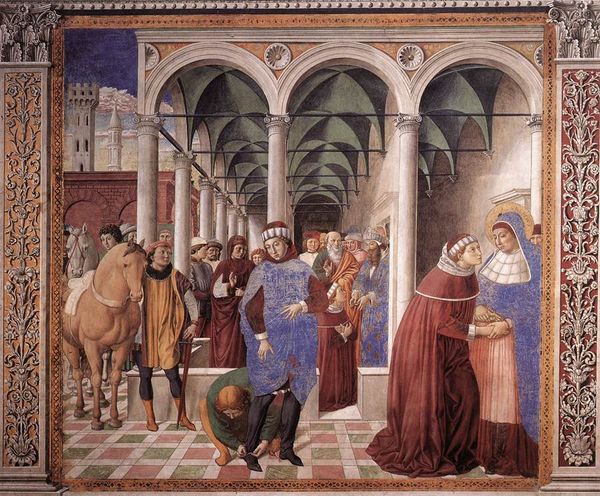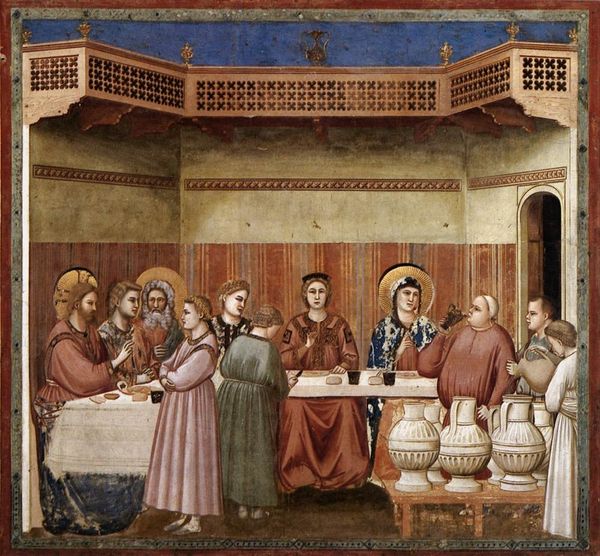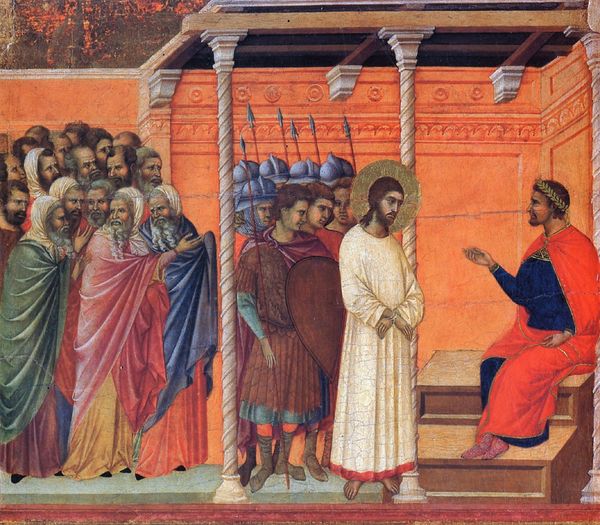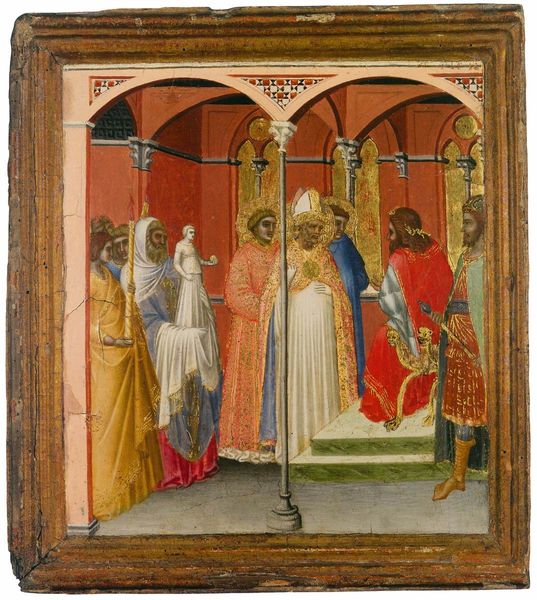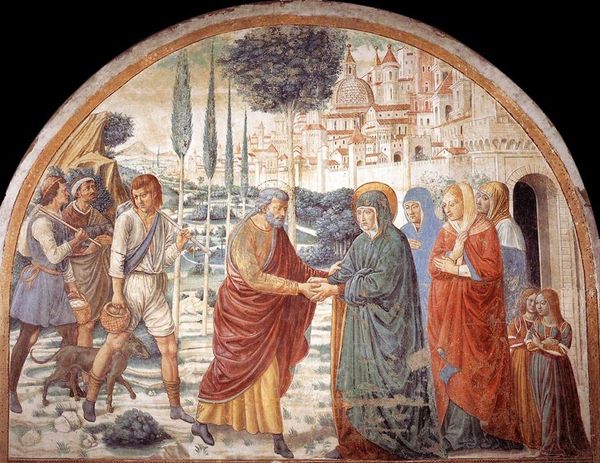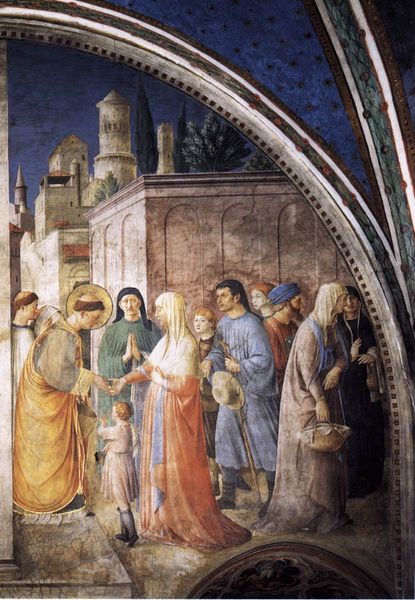
painting, fresco
#
portrait
#
byzantine-art
#
medieval
#
narrative-art
#
painting
#
figuration
#
fresco
#
history-painting
#
italian-renaissance
Dimensions: 200 x 185 cm
Copyright: Public domain
Curator: Welcome. We’re standing before Giotto's "Christ Before Caiaphas," a fresco painted around 1305. It's part of his incredible cycle in the Scrovegni Chapel in Padua. Editor: Immediately striking is the weight of this moment. Even across centuries, the accusation practically vibrates out of the scene. It's a stunning composition that fills the wall and makes you feel like you are also witnessing the spectacle. Curator: Absolutely. Giotto departs from the static Byzantine style to create figures with mass, emotion, and engaging gazes. "Christ Before Caiaphas" depicts Jesus's trial before the Jewish high priest. You'll notice Christ is surrounded and presented to the seated Caiaphas. Editor: Yes, and Christ's meek posture speaks volumes. It's interesting how Giotto positions Christ just left of center, with Caiaphas enthroned in what is almost regal green. The figures around them create chaos and consternation. One of the figures tears at their garments in condemnation. It's an intentional moment, staged by those who benefit from their position, no matter the cost to justice. Curator: This fresco, like the others in the chapel, was innovative. Giotto utilized naturalism; look at the attempts at accurate perspectives of the architectural elements and at the varying expressions on the faces. These details were intended to convey emotion to the viewers and align them with the suffering of Christ, very much setting a precedent for the upcoming Italian Renaissance. Editor: But it’s not just naturalism, is it? It's the carefully considered staging of power, which is so palpable here. And there's the use of color. Notice how Giotto subtly highlights the inherent drama and hypocrisy by shrouding those doing Caiaphas's bidding in darker shades compared to Jesus' light-colored robes. It is still such a modern and resonant image. Curator: Seeing Giotto’s radical and transformative frescoes is so illuminating because his style introduced a new chapter in painting that allowed art to take on a greater public role. Editor: Looking at “Christ Before Caiaphas”, it allows us to see that issues of power, truth, and the abuse of authority have persisted. I hope this provides a moment for reflection about how those issues impact all of us.
Comments
No comments
Be the first to comment and join the conversation on the ultimate creative platform.
